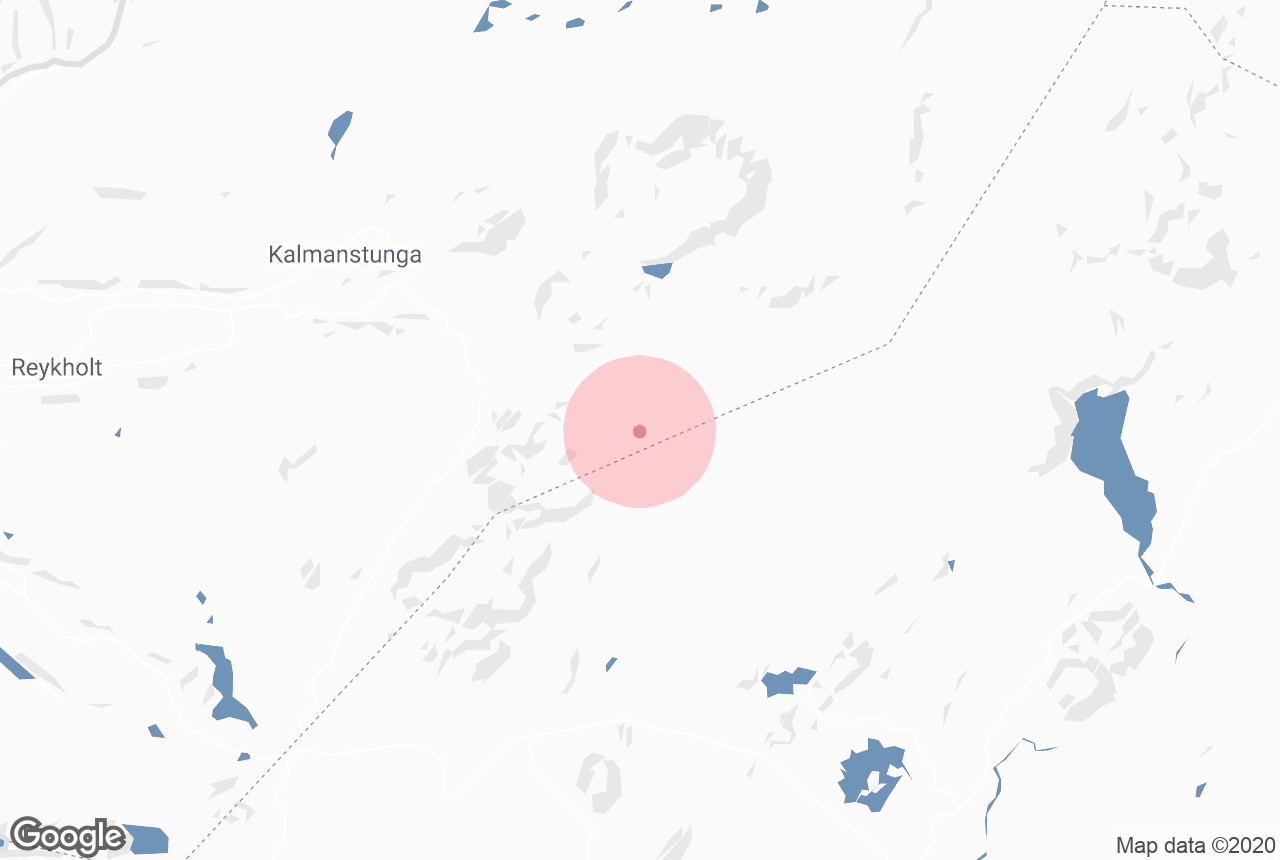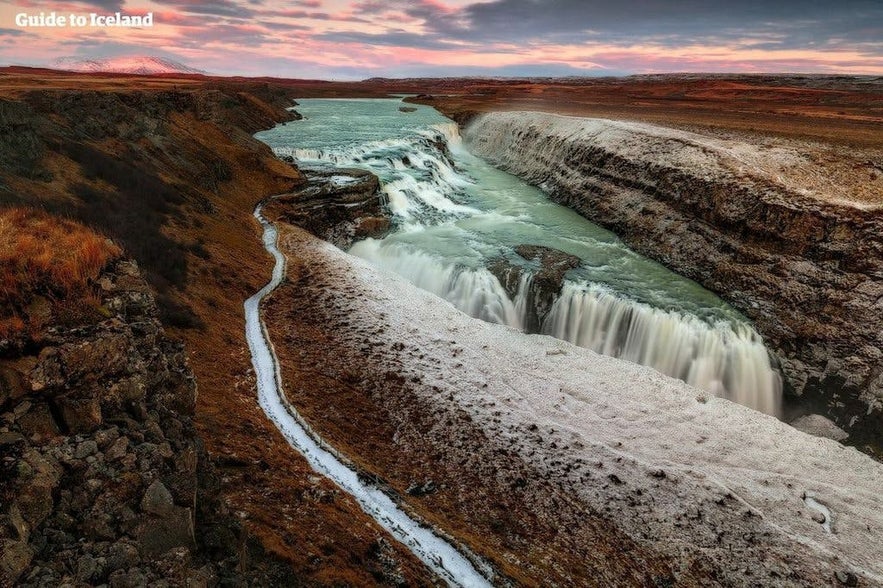L'imponente Langjökull, il "Ghiacciaio Lungo", è il secondo ghiacciaio più grande d'Islanda, con i suoi 935 chilometri quadrati. Per le escursioni in jeep e motoslitta, il Langjökull è il ghiacciaio più popolare d'Islanda, e qui è possibile anche sciare e fare escursioni.
Langjökull si trova a solo un'ora di macchina da Reykjavik, quindi potete noleggiare un'auto economica e raggiungerlo da soli, ad esempio per fare escursioni in motoslitta. Oppure potete partecipare ai tour di Langjokull per vivere il ghiacciaio e le numerose avventure che offre. Se siete interessati ai ghiacciai, visitate questo link per scoprire tutti i tour dei ghiacciai in Islanda. Continuate a leggere per scoprire tutto quello che c'è da sapere sul ghiacciaio Langjokull.
Perché puoi contare sui nostri contenuti
Guide to Iceland è la piattaforma di viaggi più affidabile d’Islanda, che ogni anno aiuta milioni di viaggiatori. Tutti i nostri contenuti sono scritti e verificati da esperti locali con una conoscenza approfondita del Paese. Potete contare su di noi per consigli di viaggio accurati, aggiornati e affidabili.
Percorsi delle Highlands
Il Langjökull si trova nelle Highlands e due strade principali, che collegano il nord e il sud dell'Islanda, lo costeggiano.
La strada Kaldidalur si estende dal Parco Nazionale di Þingvellir verso nord fino a Húsafell. La strada Kjalvegur, invece, si trova a est di Langjökull e a ovest del ghiacciaio Hofsjökull, partendo dalla famosa cascata Gullfoss a sud e passando per la bellissima area geotermale di Hveravellir a nord.
Il paesaggio di Langjokull
Il Langjökull è lungo circa 50 chilometri e largo fino a 20 chilometri, e il suo spessore massimo è di circa 580 metri. Il ghiacciaio raggiunge il suo punto più alto nella sua parte più settentrionale, chiamata Baldjökull, che si eleva di circa 1.450 metri sul livello del mare.
Il ghiacciaio si trova sopra un massiccio di montagne di ialoclastite. Le cime di queste montagne sono visibili in alcuni punti del ghiacciaio. Inoltre, nasconde almeno due sistemi vulcanici attivi, le cui caldere sono visibili dall'aria.
Il più noto di questi sistemi alimenta l'area geotermica di Hveravellir, a est di Baldjökull. Sempre a est si trova il campo di lava di Kjalhraun, formatosi circa 7800 anni fa.
A nordovest del ghiacciaio si trova un altro sistema che ha prodotto il vasto campo di lava di Hallmundarhraun, attraverso il quale scorre il fiume Hvítá in direzione della cascata di Gullfoss. Nella zona si trova anche la grotta di lava più lunga d'Islanda, l'affascinante Surtshellir.
A sudovest del Langjökull si trova il campo di lava di Presthnúkur, le cui fessure si insinuano sotto il ghiaccio. A sud del ghiacciaio si trova il campo di lava di Lambahraun e ancora più a sud si trovano il campo di lava di Skjaldbreiðarhraun e il vulcano a scudo Skjaldbreiður.
Rispetto ad altre regioni dell'Islanda, l'area è considerata relativamente tranquilla, con solo 32 eruzioni negli ultimi 10.000 anni.
Dentro il ghiacciaio
Vicino alle cime più alte del Langjökull esiste un tunnel di ghiaccio costruito dall'uomo, un vero spettacolo per ogni visitatore che passa dal ghiacciaio. Progettato e costruito dal geofisico e candidato alla presidenza Ari Trausti Guðmundsson, il tunnel permette ai visitatori di esplorare l'interno di un ghiacciaio senza dover venire in Islanda in pieno inverno per avere la possibilità di vedere le grotte di ghiaccio.
Gli ospiti attraversano la spessa lastra di ghiaccio del Langjökull, sperimentando la vivida colorazione blu all'interno e potendo osservare la bellezza della formazione e dei processi del ghiacciaio. I tour "Dentro il ghiacciaio" sono spesso combinati con attività di avventura come la motoslitta.
Ghiacciai vicini
I ghiacciai più vicini al Langjökull sono Eiríksjökull, che nasconde la montagna più alta dell'Islanda occidentale, e Þórisjökull. Anche Hrútfellsjökull si trova sul lato orientale di Langjökull.
Tra Þórisjökull e Geitlandsjökull si trova una valle chiamata Þórisdalur. Oltre a panorami mozzafiato, questa valle è protagonista dei racconti popolari islandesi; si dice, ad esempio, che il fuorilegge Grettir il Forte della Saga di Grettir abbia vissuto qui per un inverno.
Langjokull e il Circolo d'Oro
L'itinerario turistico più famoso d'Islanda, il Circolo d'Oro, non sarebbe possibile se non fosse per il ghiacciaio Langjökull; nessuna delle sue tre caratteristiche iconiche esisterebbe nel suo stato attuale senza lo scioglimento dei ghiacci.
La cascata di Gullfoss ne è l'esempio più evidente. Il fiume che la alimenta, l'Hvítá, è un fiume glaciale che sgorga direttamente dal Langjökull; l'entità della calotta glaciale è resa evidente dall'enorme volume d'acqua che vi sgorga ogni secondo.
Le sorgenti calde di Geysir, invece, sono alimentate con acqua sotterranea. L'acqua di fusione del Langjökull alimenta i campi di lava circostanti, che hanno una roccia molto porosa, e scorre in un fiume sotterraneo fino all'area geotermica, dove fuoriesce dalle bocchette formate naturalmente.
Senza il Langjökull, Þingvellir continuerebbe ad avere lo status di Parco Nazionale e di Patrimonio dell'Umanità, che gli è stato conferito per essere stato il sito originario di quello che oggi è il più longevo parlamento rappresentativo del mondo, ma sarebbe decisamente meno bello.
Nel parco sono presenti numerose sorgenti, anch'esse formate dall'acqua di fusione sotterranea del ghiacciaio. Grazie al lungo processo di filtrazione, l'acqua emerge come una delle acque naturali più limpide del mondo.
La fessura di Silfra, quindi, è la migliore località per lo snorkeling e le immersioni del paese e viene costantemente classificata come uno dei dieci luoghi migliori al mondo per queste attività.











